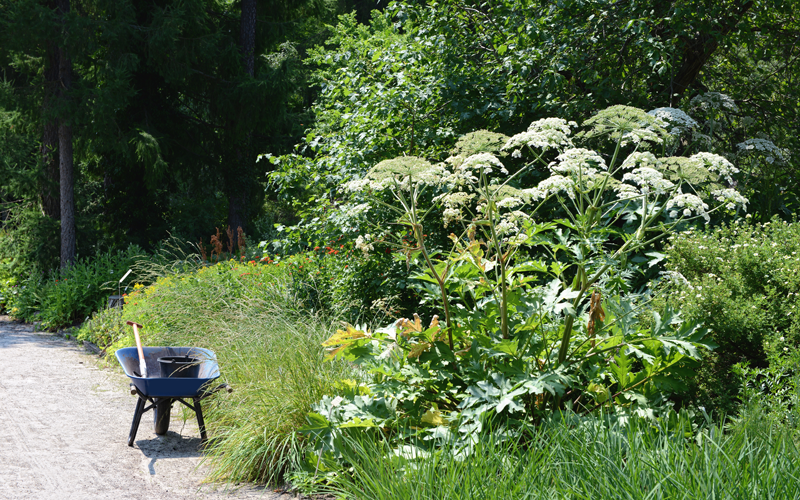
Phytophotodermatitis
Whilst members are likely aware of the risk posed by the sap of giant hogweed, there are other species that warrant awareness amongst landscape professionals.
Phytophotodermatitis is a reaction resulting from skin contact with a light-sensitising botanical agent within the plant sap or fruits of a plant, followed by exposure to sunlight. It is not an allergy; the chemical contained within the plant, furanocoumarin, causes cell membrane damage to anyone whose skin comes into contact with it, followed by exposure to Ultraviolet A radiation.
The most common scenario leading to injury in the landscape industry, is when operatives tasked with maintenance activities accidentally get sprayed with sap. This is most common when operatives use machinery in conjunction with clothing which does not provide total covering of the skin. Hands, forearms and the face are at most risk from injury.
Whilst the damaged area of skin will heal after several weeks, post-inflammatory pigmentation or thermal burn may persist for several years.
Whilst giant hogweed, Heracleum mantegazzianum, is widely reported to cause serious skin reactions, phytophotodermatitis may result from several other plants, widely found in the UK in green spaces:
- Common hogweed Heracleum sphondylium is significantly less dangerous than giant hogweed, but nevertheless precautions should remain due to the presence of phytotoxins.
- Wild parsnip (Pastinaca sativa) is widespread in central and southern England on roadside verges and greenspaces, but also may be found locally and in coastal areas elsewhere.
- Wild carrot (Daucus carota) is widespread throughout the UK and has value to biodiversity, but can cause mild phytophotodermatitis upon contact with skin.
Protection from phytotoxic plants may be achieved by ensuring total coverage of skin during operations which may result in sap from plants becoming airborne. Use of a face shield rather than mesh on helmets will ensure a higher level of protection.
